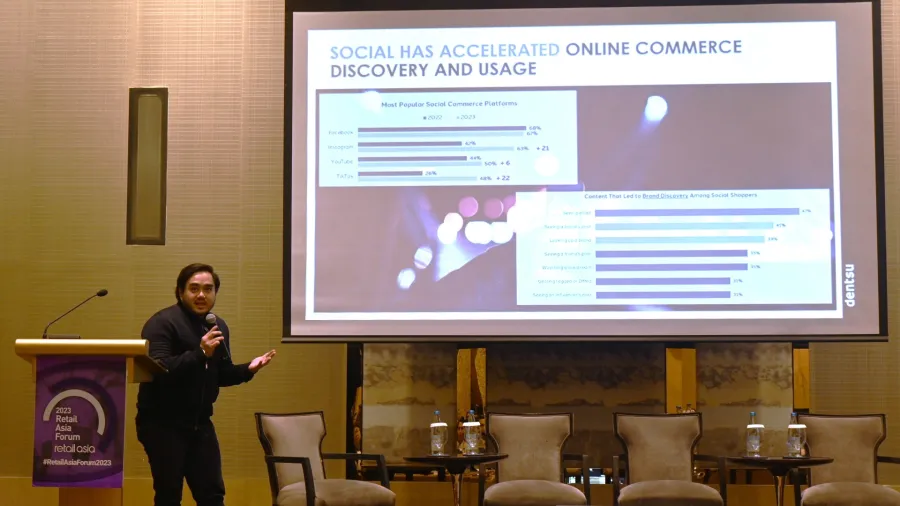
3 things retailers must check to deliver the promise of digital proximity
These three things can give the necessary push from intent to purchase.
With the blurring of offline and online retail, consumers have shifted from a ‘going shopping’ paradigm to an ‘always shopping’ mindset this means it has been more important than ever that retailers ensure that they are top of mind when the time to make a purchase comes.
Speaking at the Philippine leg of the Retail Asia Forum 2023, Roki Ferrer, Head of Data at Dentsu said that to attract consumers, retailers must manage to deliver the promise of digital proximity.
“Digital proximity is not just about being in close contact with your customers but across three different dimensions. First is the proximity of space or how we convert media platforms or media channels into connected ecosystems. Second is how can we create the proximity of time? That moment of inspiration how can it be accelerated to become a moment of conversion? And lastly, the proximity of interest. We don’t want to keep the customers waiting. So when there is already intent, we want to bring the functionality of your brand into an emotional response,” Ferrer said.
Checking these three things will solve the challenge of digital proximity with consumers.
Integrated experiences
When talking about integrated experiences, this does not only mean omni-retail.
“It’s how marketing campaigns are linked to loyalty programmes, fulfilling in delivery, and how that is connected with customer service. That kind of integration happens on multiple media platforms,” Ferrer explained.
For this to work, consistency is key. This means that when they visit physical stores, they want the experience consistent across online marketplaces, websites, and even social media pages.
The aim, Ferrer explained, is to be able to reframe retail stores into studios.
This can be done in a variety of ways, for example, by experimenting with hybrid retail experiences. Predictive tech can also surprise and delight customers, and show up the best way possible.
Frictionless anticipation
Proximity of time simply means reducing friction between discovery, purchase, and consumption.
“It’s not about frictionless journeys but frictionless anticipation. Customers would know when they are ready to buy. It’s up to retailers to avoid providing them with distractions from this last step. Typically, customers would visit your website just to browse. Then suddenly, here’s an article, here’s more product information. These distractions actually hinder customers from converting into buyers,” Ferrer said.
Another thing to note is that consumers care about the speed of delivery. Consumers are willing to pay a premium to get their products faster, especially through digital channels.
“When it comes to the proximity of time, we have to look at journeys not as funnels but as individual moments. People will respond depending on their moods or disposition and not depending on their awareness or engagement with a brand,” Ferrer added.
Function to emotions
How to convey emotion through digital has already grown important. For example, customers expect to be entertained and captivated.
“We found out that choice of brands and products are also leveraged by the values the brand reflects to the customers. It’s a new way of looking at engagement and connecting with consumers. Shopping isn’t just a single moment but what we have found is that shopping is a collection of different memories that add up. For example, in QSR, a good customer service or a bad one can impact how a consumer will remember the brand,” Ferrer said.
Ferrer suggests that to create meaningful value post-purchase, data should be used to create loyalty and advocacy. An example Ferrer uses is how brands use their loyalty programs for promotions and events that aren’t open to everyone.
Another way is to explore shoppertainment. An example is how retailers can make use of social media platforms to sell products through live-selling which can entertain consumers.
Lifetime value can also be raised by creating exclusive loyalty rewards for consumers.
“If we want to create shoppable moments, we have to have to harness two things. Audience identity and signals and online retail media. Data is the pathway that will connect intent to action,” Ferrer said.



















 Advertise
Advertise





